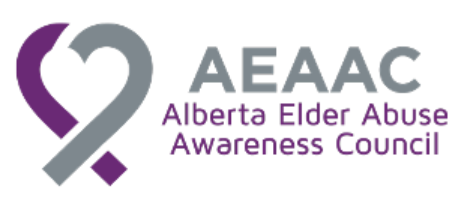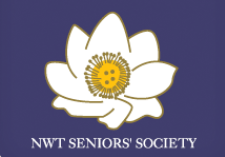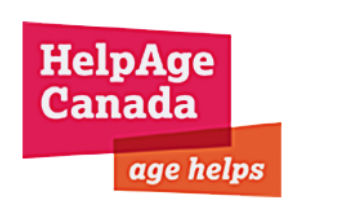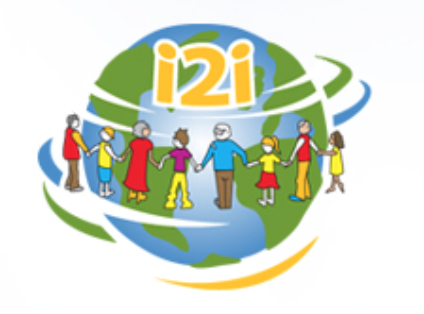Blog
- Details
December 17 is Anti-Bullying day, for this occasion A & O: Support Services for Older Adults and the Canadian Network for the Prevention of Elder Abuse are teaming up to announce an Anti-Bullying Campaign to help raise awareness of bullying of older adults.
In a recent Canadian study, the preliminary reports identified that 57% of English speaking older adult respondents reported being bullied in the last 4 months.
- Details
The federal government and the consultancy Delsys are working on a project to create more/efficient funding for community organizations that support projects led or inspired by seniors. Their current objective is to gather insight and ideas from seniors across Canada.
The following online questionnaire takes about 10 minutes to answer. It asks seniors to share ideas and experiences with community programs and activities, what issues are most important to them, how connected they are to their community. Interviews will also be carried out over the phone and in person if you wish to participate but are not interested or able to do so online.
FRENCH QUESTIONNAIRE
ABOUT NHSP
The New Horizons for Seniors Program (NHSP) is a federal grants and contributions program that support projects led or inspired by seniors making a difference in the lives of others. They provide up to $25k grants to almost 2,000 community organizations every year. You can read more about the program here.
- Details
Released on Dec. 13, 2019
Minister of Seniors Mandate Letter
Dear Ms. Schulte:
Thank you for agreeing to serve Canadians as Minister of Seniors.
On Election Day, Canadians chose to continue moving forward. From coast to coast to coast, people chose to invest in their families and communities, create good middle class jobs and fight climate change while keeping our economy strong and growing. Canadians sent the message that they want us to work together to make progress on the issues that matter most, from making their lives more affordable and strengthening the healthcare system, to protecting the environment, keeping our communities safe and moving forward on reconciliation with Indigenous Peoples. People expect Parliamentarians to work together to deliver these results, and that’s exactly what this team will do.
- Details
By Pam Burns, CNPEA Board member
I was fortunate to attend the 19th Annual Diverse Voices Conference in Edmonton on November 13- 15, in 2 roles (volunteer and delegate), wearing 3 hats: Alberta Elder Abuse Awareness Council (AEAAC) Vice-Chairperson, Canadian Network for the Prevention of Elder Abuse (CNPEA) Board Member, and St. Aidan’s Society Staff Member. Collaboration between the Diverse Voices Planning Committee and the AEAAC resulted in the first-ever Elder Abuse Pre-Conference. Diverse Voices is the largest Domestic Violence Conference in Western Canada, hosting approximately 630 delegates, and having elder abuse included was truly a leap forward for elder abuse awareness.
- Details
PhD student Silvia Fraga Domínguez, from the Department of Law and Criminology at Royal Holloway, University of London (UK), is conducting a study looking at the experiences of people who help older adults who have been victimised (whether family, friends, or others who help older people outside of a professional context). The objective of the study is to understand the barriers these individuals encounter and how older victims of abuse can be better supported.
This study has received ethical approval and is now looking for participants. While the study is based in the UK, participants from Canada and the US are welcome. Additional information is available here: www.supportexperiences.weebly.com and the study lead can be contacted at this email address: 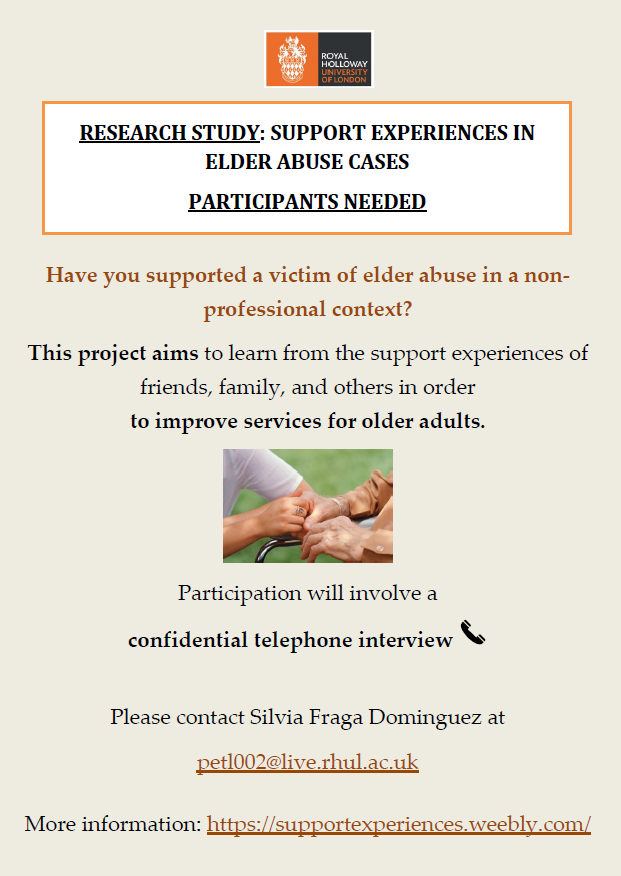
Page 24 of 55





